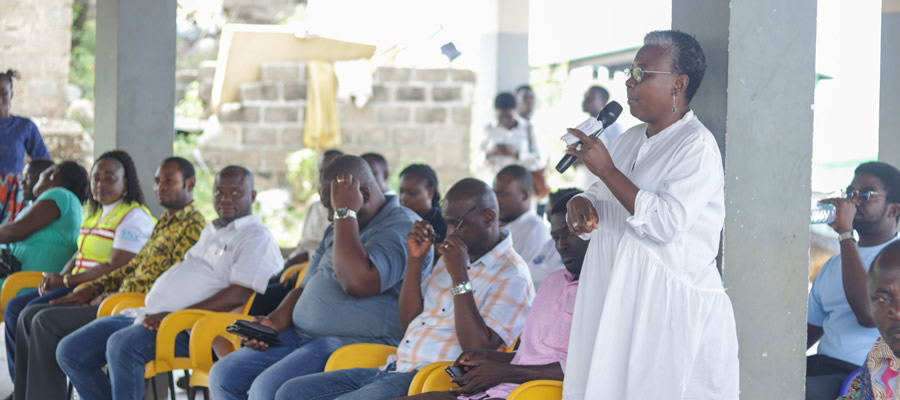

Health
To promote health care delivery, the district has a number of health facilities and services. These facilities have been brought to the doorsteps of the people. The district has one hospital situated at Dixcove and two health post/centres at Agona Nkwanta and Apowa. The total number of public clinics is five and also there are two private facilities and eighty two (82) outreach posts.
There was increase in the number of medical officers from one to two but unfortunately one is deceased. The number of medical assistants also increased from one to two. The number of nurses also increased from 34 to 50 while the number of paramedics also increased from 49 to 60 within the period 2002 - 2005
HIV/AIDS
The prevalence rate in the district has improved from 3.0% in 2004 to 2.8% in 2006. The sharp decrease in the prevalence rate was mainly due to the formation of peer educators in schools and communities to educate the people on the causes and prevention of HIV/AIDS as well as condom distribution through out the district.
At present, the District Aids Committee has been able to identify some of the people living with HIV/AIDS (PLWHAs) in the district. These PLWHAs are being given financial support to sustain and prolong their lives.
Again, orphans are also sponsored by the World Vision and the District Assembly in terms of the provision of clothing, payment of school fees and other logistics. Voluntary Counselling and Testing Services are also offered in the District Hospital at Dixcove. The district is yet to come up with its strategic plan on HIV/AIDS. It is strongly believed that when the strategic plan come out HIV/AIDS activities in the district would be intensified to control and prevent more people from being infected and affected by the disease.
Counselling Services for PLWHAs do not exist in the District.
Population Management
The projected population based on the 2000 Population and Housing Census for the district for 2006 is 114,932. The population growth rate in the district is about 3.2% and this is higher than the national population growth rate of 2.6%. To control the birth rates, family planning services have been made available throughout the district. In fact, more women and men are being reached on issues concerning family planning by service providers. As a result of intensified sensitization and education, family planning and birth spacing are being adopted by couples and this has helped to control and manage rapidly growing population in the district.
Malaria is still the most common disease in the district. The people in the district also suffer from diseases which include gastroententis, upper respiratory tract infection, hypertension, typhoid, anaemia, cholera and others.
Teenage Pregnancy
The district has a very high level of teenage pregnancy. During the period from 2002 - 2006, some Two thousand, Six Hundred and Twenty Nine (2,629) teenagers got pregnant. Thousand Nine Hundred and Ninety Four (1994) of the total number fell between the age range of 15 - 19 years whiles the age range of 10 - 14 years recorded Thirty Five (35) incidents of pregnancy.
A careful study in the trend in incidents of teenage pregnancies reveals that the phenomenon keeps increasing annually. In the year 2002, the district recorded a total number of Six Hundred and Nine (609) teenage pregnancies. This figure increased to Six Hundred and Thirty One (631) incidents in 2004. From the period 2004 - 2006 done, incidents of teenage pregnancies shot up for Six Hundred and Thirty One (631) to Seven Hundred and Four (704.
Date Created : 11/16/2017 6:34:09 AM









 facebook
facebook
 twitter
twitter
 Youtube
Youtube
 +233 593 831 280
+233 593 831 280 0800 430 430
0800 430 430 GPS: GE-231-4383
GPS: GE-231-4383 info@ghanadistricts.com
info@ghanadistricts.com Box GP1044, Accra, Ghana
Box GP1044, Accra, Ghana